Anatomy of the Human Body
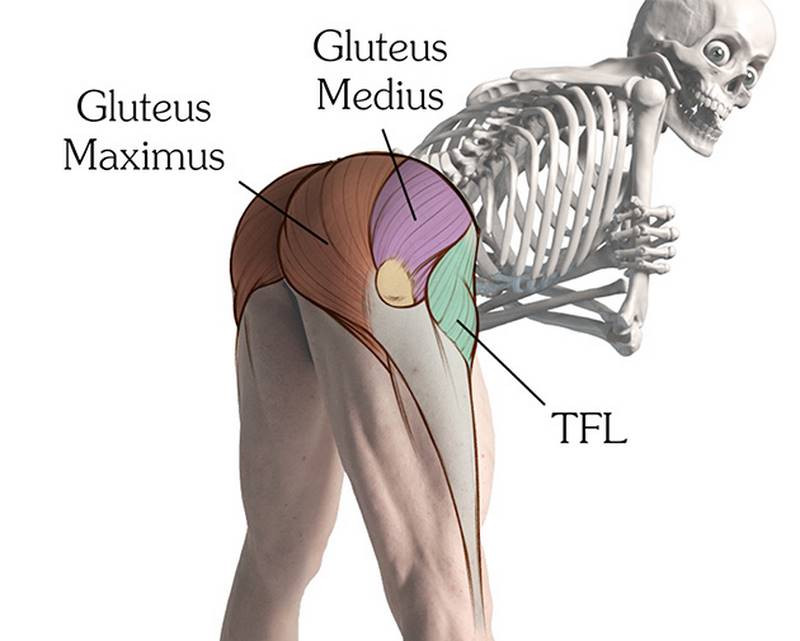
It's time to draw butts. This lesson will explain the three major butt muscles, and how they're covered in fat and skin.
The first step in drawing magnificent butt muscles is to understand where they attach. Let's take a look.
Butt Muscles
Butt muscles originate on the pelvis, which if you remember we constructed using a bucket tipped forward. Check out the pelvis lesson if you need a refresher.
The iliac crest of the pelvis swoops from the front corner (ASIS), to the back triangle (the sacrum). This sloping side plane (ilium), is where the gluteal muscles anchor, right under the top ridge. They insert into the femur, mainly around the great bony landmark: the greater trochanter. See what they look like in the animation on the right, going from the origin at the pelvis to the insertion at the femur.
But there's more to it than that. They also insert into a long stretch of tape-like tendon that runs down the outside of the leg, called the iliotibial band. The middle portion sits tightly along the side of the quads. Sometimes its so tight that you'll see it clearly pinching the muscles. But we'll cover that in the quads lesson.
The 3 butt muscles we'll study in this episode are the gluteus medius, gluteus maximus and tensor fascia latae. There's also the gluteus minimus and a few others, but they're hidden deep inside, so we'll ignore them.
These 3 butt muscles can be simplified to a tire. Or a croissant! Whichever you prefer. It's amazing how much butts and croissants have in common. Similar shape, filled with fat, and they're delicious.

Basically, the butt muscles wrap around the greater trochanter, which is right in the center of the hips. From the back, the forms can be constructed with two sets of diagonal ellipses. They kinda look like a butterfly. A broad layer of fat sits on top and droops down until it tucks into the gluteal fold. More about that later...
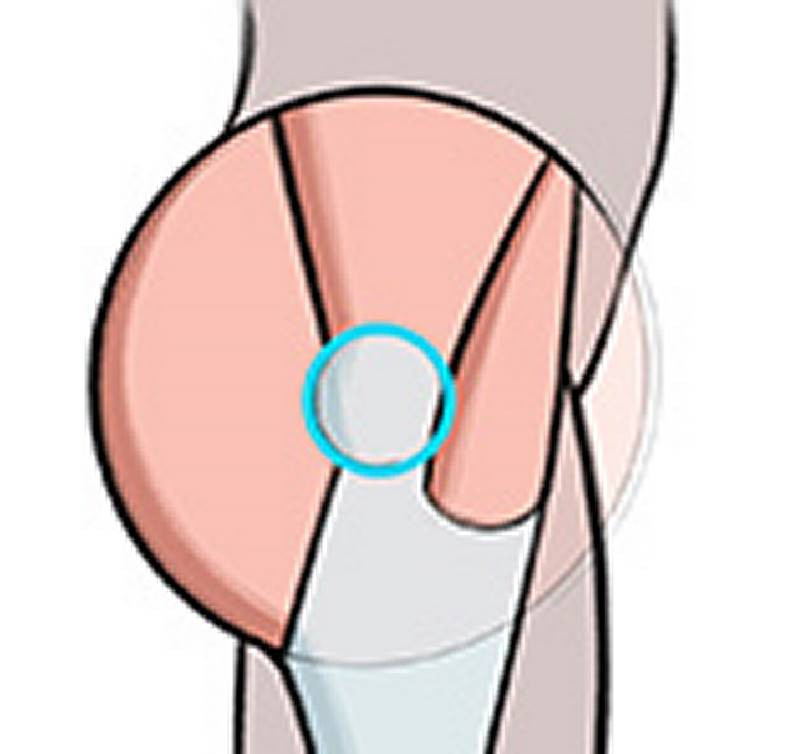
On a female butt, there's a thicker layer of fat, but that butterfly doesn't fly away. In fact, it gets bigger if the top part merges with the obliques. The love handles keep this rhythm going all the way through the narrow part of the waist and connect the two sides. Use this rhythm when you're practicing your gesture quicksketch. It's very helpful. It's a slightly more detailed version of the bean.
Of course that's not always the case, since butts come in all shapes and sizes. A slightly less defined design would be to add a little more fat around the sides for a rounder bubble butt. It really just depends on the fat distribution. You could have the softer rounder cheek, but a defined separation at the iliac crest between the glutes and obliques
If you draw enough butts, you'll start learning the patterns. That's why in an upcoming episode, we'll learn how to draw butts from every angle. Don't miss that one.
Gluteus Medius
The gluteus medius is a lot like a muscle you already know: the deltoid. Both pull the limb away from the body. Both have multi-directional fibers to pull the limb forward and backward. They're even similar in shape!
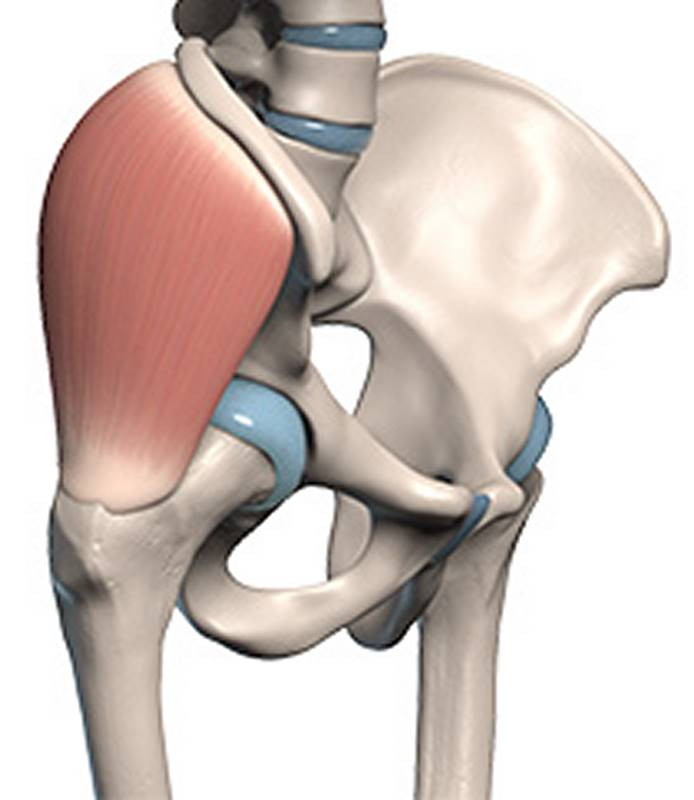
It originates from the front 3/4 under the lip of the iliac crest, though a part of its origin is covered up by the gluteus maximus. Its fibers converge like a fan into a thin flat tendon which inserts on the outside surface of the greater trochanter.
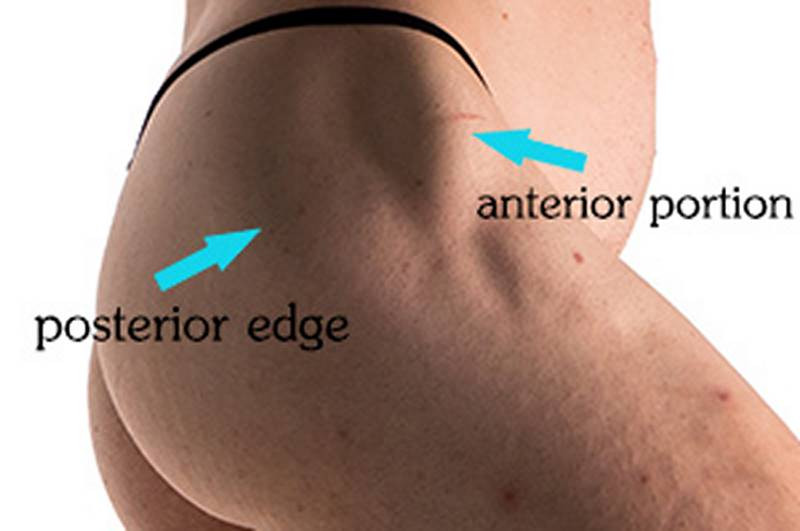
Gluteus Maximus
The gluteus maximus is the biggest muscle in the entire human body. The latissimus is wide, but it's thin. The gluteus maximus is thick! It's the famous butt-muscle that allows us to stand strong.
We'll study the fat after we learn the glute.
It originates all along the back lip of the ilium, and along the edges of the sacrum and coccyx. Its fibers pull down at 45 degrees making kind of a rhomboid shape. Most of the gluteus maximus fibers insert to the iliotibial band.
It extends the femur. It also laterally rotates the femur. It also abducts the femur. And its lower fibers adduct the femur. But we may be tempted to think of the gluteus maximus only as anchoring at the pelvis to grip and move the leg, when it often does the opposite.
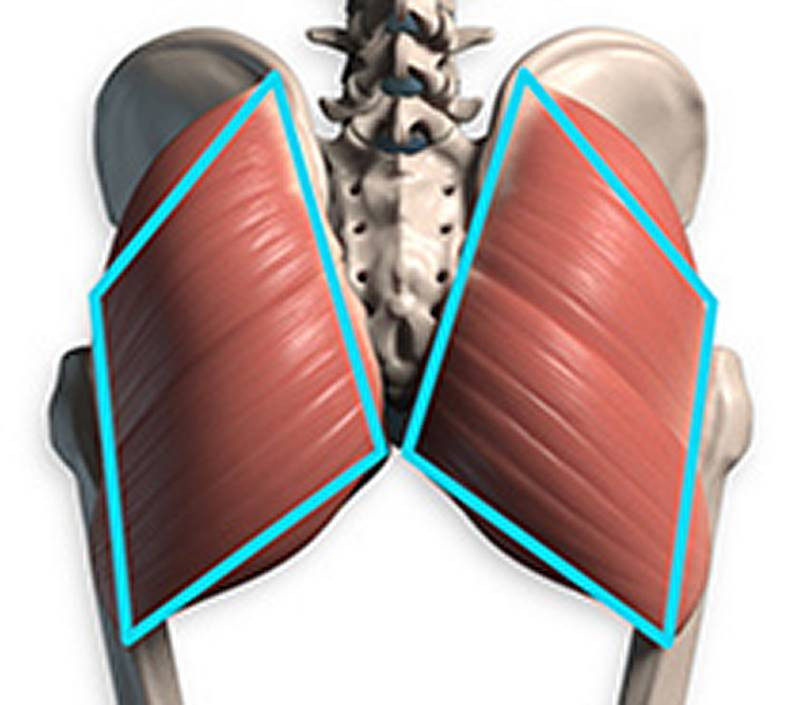
Once our knees are locked, we use the pillar of the leg as the anchor, and the gluteus maximus pulls on the pelvis and holds the rest of the body.... UP! That's why we're so special. It lets us do some amazing things. It lets us run, climb, and walk up stairs. It keeps us standing and lets us sit on it. It's our uniquely human, antigravity muscle. We are the animal that stands!
Now for the final layer. Did you know we humans are the only animals uniquely and abundantly blessed with butt fat? But what about... Ya, hard to believe, but that's all swelling. Most humans find it to be kinda gross, but trust me, the male monkeys go bananas over it.
Anyway, fat makes up about half the width of our hineys, and it's not all equal. It gathers toward the center, so it's heavier medially - between our legs. Also, gravity's a thing, so it's heavier at the bottom. Sometimes you might even see a transition between the muscular form and the squished fat when the model is sitting. We'll talk more about how it affects the surface in Premium.
This horizontal crease is called the Gluteal Fold. It's obvious when the weight is on one leg, but it disappears when the leg flexes forward.
The gluteal fold is lower than the actual gluteal muscle fibers on the inside. It extends outwards horizontally cutting across the muscle fiber.

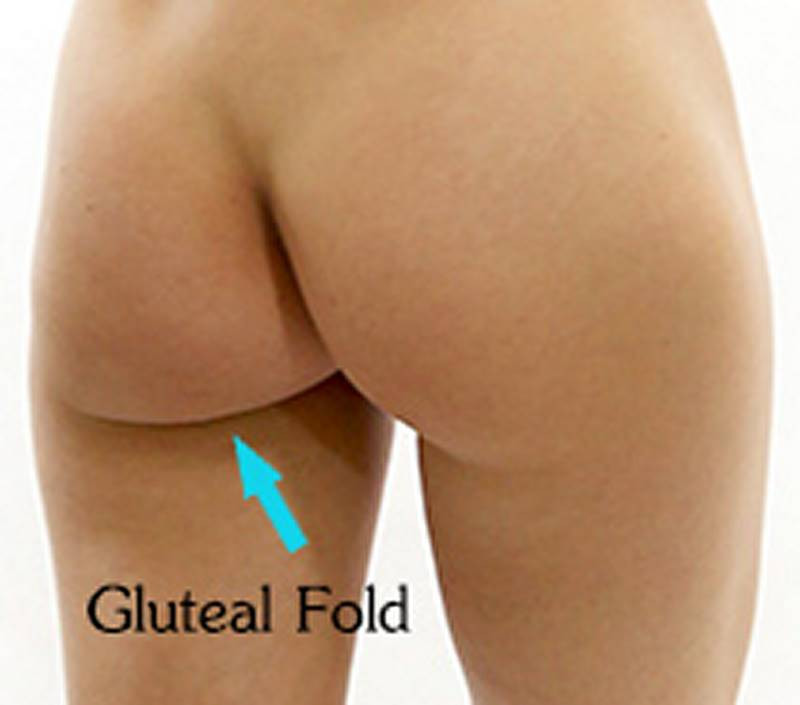
So, on the surface on an average person, you won't actually see this diagonal swooping border of the gluteus maximus. On a typical athletic type, you'll see the gluteal fold, and a subtle hint of the diagonal muscle fibers continuing to the side of the leg. On a body builder with impossibly low body fat, you'll just see the shape of the muscle. That's why this looks so strange. There's no gluteal fold...

Artists love the gluteal fold because it's a natural cross-contour line around the form of the leg. We can use it to show whether the leg is coming toward us or going away from us. It's a rhythm line for gesture drawing. As the leg goes forward or back, the gluteus maximus and fat pad will react to the movement.
Every butt is different, with varying amounts of muscle and fat... The Premium version of this lesson has an extra section on physique variations for this reason. But if you want the reliable landmarks, seek the bones. That's why we studied pelvises before putting on muscles and fat. And there's one more muscle to study... the tensor fasciae latae
Tensor Fasciae Latae
The tensor fasciae latae is a muscle located around your pockets. Almost the shape of your pockets.
The tensor fasciae latae anchors at the ASIS, aims to the side of the great trochanter, then just stops. It doesn't attach to any bone here. In fact, it attaches to the iliotibial band, which is hard to see in this area because it's very thin fascia. Remember, fascia is like seran wrap. When the tensor fasciae latae flexes, it pulls or tenses the lateral fascia. That's how it got its name. Tensor of the fasciae latae
Btw, I don't want to keep saying this long-ass name. So let's use TFL. Which stands for Too F*cking Long. Just kidding, it's tensor fasciae latae.
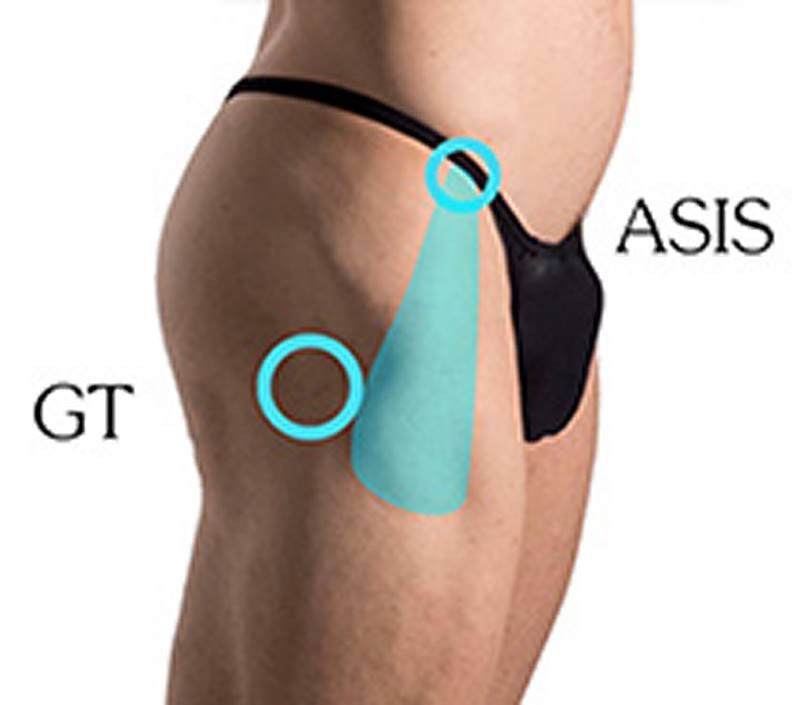
The TFL and gluteus maximus are antagonists. They both insert on the iliotibial band and pull it from opposite directions. The gluteus maximus did a number of tasks. So does the TFL. It flexes the leg forward. It abducts it out to the side. And it medially rotates the leg
The shape of the TFL is a bit tricky when the leg moves. In a straight leg, it's longer and flatter. Kind of a long teardrop shape since it's much thinner at the top. When the leg flexes, the TFL really shortens and bulges out. You might see it bent in half with a pinch in the front. Maybe even something crazy, with a bunch of skin folds down its length. Or just shaped like a short triangle. And you might even see muscle fibers, like little fingers grabbing on to the iliotibial band. This variety makes the TFL tricky.
On females there's a thicker layer of fat softening the hips. It's reserve to feed the baby. Even on someone very skinny, there's a layer of fat hiding the muscle definition.
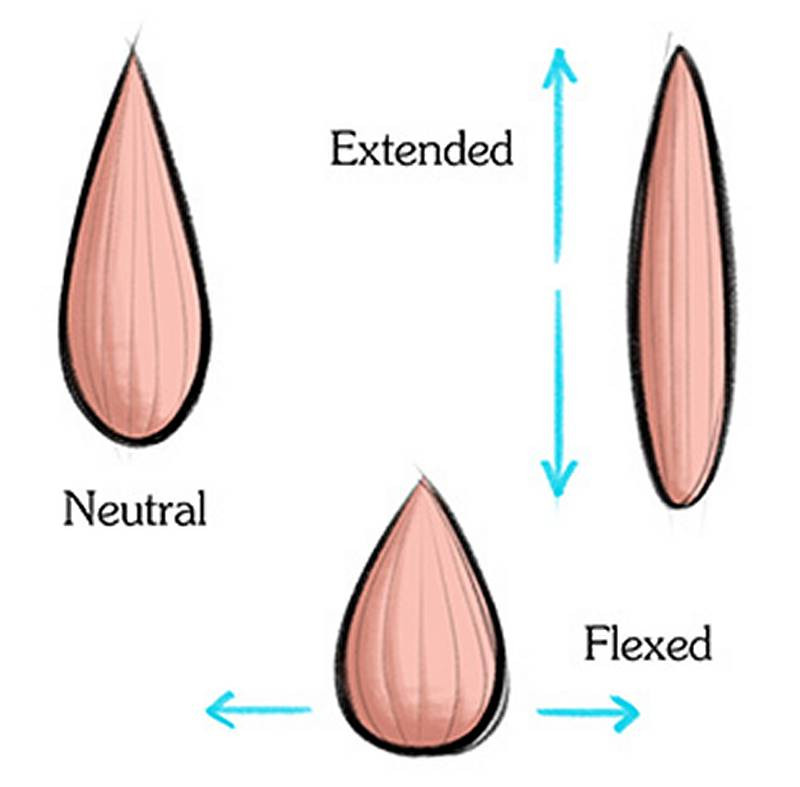

The hips vary a lot based on the gender, age, and most of all, physique.
Physique Variations
Available in the premium section... and not just physique variation. Premium Proko people get assignment demonstrations, extended critiques, 3D models, a downloadable ebook, and premium fart jokes. Even if you don't get premium, I still care about you! I hope you participate by doing the assignment and posting in the Anatomy Discussion Page.













